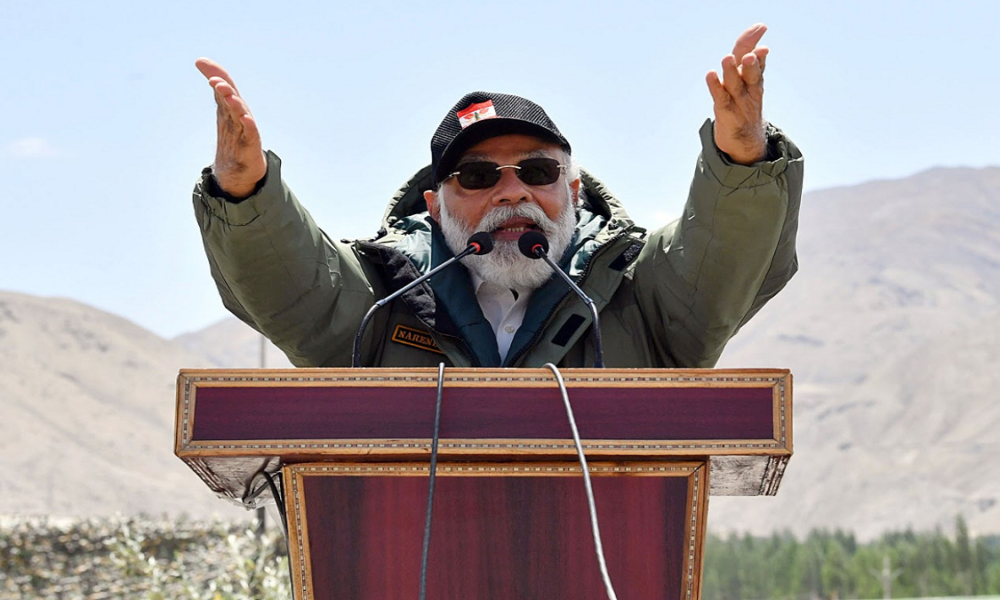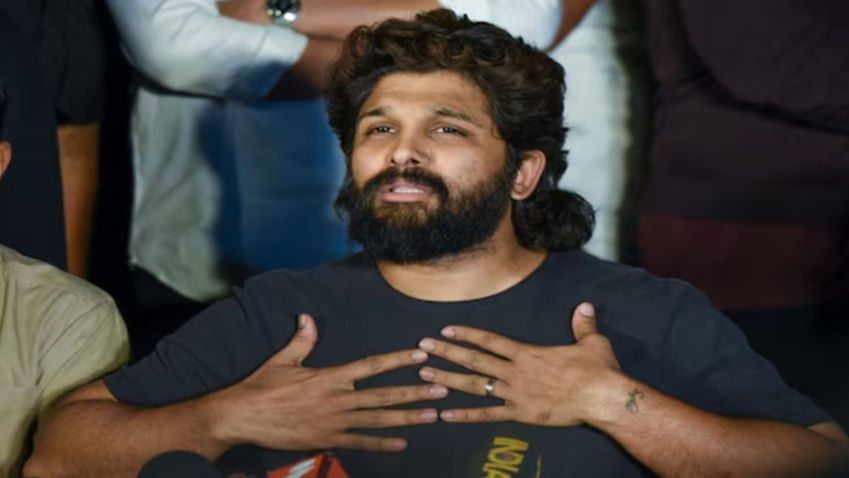A recent tweet by Global Times made every Indian’s blood boil. It said: “Indian leaders understand how powerful China is, while Indian nationalists are ignorant and arrogant, so they might say some harsh words, but they dare not take the first shot at us.” India would be more humiliated than 1962 if it launches a new conflict.
Prime Minister Narendra Modi’s Friday address to armed forces from Ladakh was a befitting reply to China’s misconceptions. While leading from the front, he said that the world has seen the bravery of Indian soldiers but at the same time India has always believed in humanity. The era of expansionism is over, the world has made up its mind against expansionist powers. Such powers have created danger to world peace and have been demolished with time.
Rather than point fingers at India’s nationalists, China would be better off if it did some introspection about its misplaced nationalism and expansionist regime. It is a fact that China is creating conflicts in the world. Clearly, Xi Jinping’s ambitious desires are now getting wings.
He is the President of the People’s Republic of China for life, Chairman of Central Military Commission and General Secretary of the CCP. So, he enjoys combined power of maniacal proportions. Denial of facts cannot hide China’s actual designs of worldwide expansion for subjugation.
It is in line with this aim that China’s most influential leader is asserting world supremacy at a time of his choosing. First, his country gives coronavirus, which US President Donald Trump very aptly describes as the “China virus”. The virus spread to the entire world and crippled even most powerful economies of the US and Europe.
China, on 15 June, chose to first provoke India at the Galwan Valley with a carefully crafted evil design. Subsequently, it brought in legislation in Hong Kong to suppress its people. In between, it created problems for Japan and Taiwan. Now it is threatening countries outsourcing their manufacturing from China of stopping goods supplies.
However, no matter how intense the Chinese provocation may be and for Indians difficult to control their anger in the face of repeated provocations, it’s time for us to show restraint. Let’s be practical, the country is grappling with coronavirus and the economy is not in the best of its shape. But if push comes to shove, then India should go hammer and tongs to protect its integrity and sovereignty.
What India needs to do right now is to initiate a new wave of nationalism aligned to “Aatmanirbhar Bharat”. It was Indian nationalism which drove away the colonial British out of India. What followed was a resolve to build a new India. We have come a long way but today there is a need to evolve a fresh sentiment, which will lead India to become a superpower.
In order to achieve this sentiment, there is a need to minimise internal differences — both political and social. There is a need for unity to fight a long-drawn battle. India needs to inculcate a true sense of pride in nationalism solely aligned to excel in every possible sphere of human development.
It needs to be understood that Global Times’ tweets are simply a reflection of the Chinese Communist leadership’s mindset, having a maniacal desire to dominate the world. Either by bribing or ridiculing those who oppose or resist them. Question is how long can this last? If history is any guide, surely not indefinitely.
In fact, in the present situation, people have started seeing Xi’s eerie parallel with Adolf Hitler. The Fuehrer ran through Europe, until he found free world’s resistance building up around France and the UK. Suddenly, for inexplicable reasons, or perhaps due to the subtle twist of destiny, he turned towards the USSR and that was the beginning of his end.
In the Chinese case, the worldwide anger and resistance is already building up over Covid-19; there is escalation in confrontation with the US, Hong Kong, UK, Taiwan, Vietnam, Japan, etc. There is a simmering revolt in Tibet and Xinjiang; Chinese economy is in the downslide. Regardless of its brave posturing and in the midst of all this, China chose to escalate the LAC to browbeat PM Modi, who has so far shown reasonable restraint. What is surprising is that despite so many personal meetings with him, the Chinese Premier has failed to judge the steady resolve of PM Modi.
For Global Times to remind India of 1962 is not only juvenile but also laughable. Unfortunately, a totalitarian regime in China has not allowed Chinese people to understand and feel true nationalism. The Communist government had imposed forceful nationalistic rituals by invading the diversity of free Chinese people like Manchus and Uighurs and assimilating them with the Han nationalism.
The ongoing oppression in Tibet and Xinjiang had continued unabated for decades. If they call this kind of forceful imposition of Han supremacy as Chinese nationalism, they better understand that they are living in a fool’s paradise. Such a cosmetic nationalism by an expansionist and revisionist regime has been thoroughly rejected by other Chinese regions like Taiwan and Hong Kong.
On the contrary, Indian nationalism is built on democratic values and sacrifices and is voluntary in nature. Indian nationalism is definitely not to oppress others but to save the integrity of Indian land, values and cultures. India doesn’t need the land of neighbours to prove that it is a growing superpower because that notion itself is against the values on which Indian nationalism is built upon.
A young man in a remote, backward Indian village is not nationalist because he is afraid of bayonets of an oppressive regime, he is nationalist because he loves this land. He may not have a decent income, high living standards or jobs in garbage manufacturing factories, but surely he will turn up voluntarily to fight and kill if somebody tries to invade his motherland.
So China should come out of its myopic nationalism specs and face the truth. Unity in diversity is India’s strength, and not weakness. For an expansionist Goliath, India is a squarely fitting and wellcapable David.
India, under the present leadership, is not only fully prepared, but it has factored in a two-front war since long. Never before has the geopolitical scenario been more favourable for India than today. Global Times should be simply ignored or at best be watched only to evaluate the mood swings of the Chinese leadership.
India has just started tightening the noose on China and the latter has started cracking up. Cancellation of some contracts of Chinese companies and banning of 59 Chinese apps including TikTok, which is estimated to have suffered $8 billion loss due to the ban, is just the beginning. Several countries of the world have now come out in India’s favour. China is cornered.
India’s biggest challenge is to strengthen its economy. This is easier said than done but not impossible to achieve. Public opinion is in favour of self-reliance. People are prepared to make sacrifices. This could become a great force multiplier. It may take time for India to be fully selfreliant but it would eventually lead to great results, which every Indian could be proud of.
Global Times, a few days ago, tweeted to take a dig at India’s reliance on China on Active Ingredients for Pharmaceuticals. It said: “India won’t find a cure for its drug industry if API supplies stop coming from China.” Clearly these postings are in extremely bad taste, given that APIs constitute a major chunk of Indian exports from China.
Things are changing and China needs to worry. The Indian government has already started exploring the technology for coal gasification, a process that converts fossil fuel-based carbonaceous materials into carbon monoxide, hydrogen and carbon dioxide. The ash content from this process could be used to develop APIs, which form the base for making several lifesaving medicines.
The government has started gearing up for a long haul. India is now introspecting and preparing for self-reliance. Recently, policymakers held a high-level meeting where coal gasification projects were identified on the basis of availability of raw material, coal, land, water and other infrastructure required for such projects.
Last month Prime Minister Modi had launched the auction process for 41 coal mining blocks. The Cabinet has also approved a policy on methodology for auction of coal and lignite mines/ blocks for sale on revenue sharing basis wherein 20 per cent rebate has been provided in revenue share for coal gasification projects.
Similarly, the government is developing Bulk Drug Manufacturing Parks, Medical Devices Manufacturing Parks and Production Linked Incentive Schemes. These schemes are aimed at selfreliance for making medicines and medical equipment.
Both the Ministry of Electronics and Information Technology and the Department of Pharmaceuticals have been directed to intensify their engagements with the private investors. The government is also giving incentives to private manufacturers to indigenise spare parts required for medical equipment such as those required for making medical ventilators.
However, there will be a need for handholding of Indian entrepreneurs and boosting their morale to deliver. This may require major incentives, reduced and more simplified tax regime, relief from excessive bureaucracy. The government will have to expedite development of infrastructure, which is a prerequisite of inviting foreign investment.
India has great scientists who could help develop effective technologies, especially in manufacturing of semiconductors, electronic parts, car batteries for electric cars and diversification in manufacturing of heavy machinery. Indian scientists could also help engineer scales of economy and notch up India in participation of global value chains.
In order to become an alternative manufacturing destination India will have to work towards skill development. India lags far behind in skills, though it has great potential. The government needs to pay extra attention in this direction.
India is strengthening militarily to acquire a back-breaking capacity of fighting on several fronts. Defence Minister Rajnath Singh approved a proposal for procurement of 21 MiG-29 fighter jets and upgradation of 59 MiGs, 12 more Su-30 MKI aircraft. Proposals for approximately Rs 38,900 crore for defence acquisition were approved. While MiG procurement and upgradation from Russia is estimated to cost Rs 7,418 crore, Sukhoi will be upgraded by HAL at an estimated cost of Rs 10,730 crore.
While it will take some time for India to strengthen its economy and military, there will be moments in between when Indian’s patience will be tested. It is in these moments that Indians will have to show restraint and channelise patriotism into meaningful actions.







